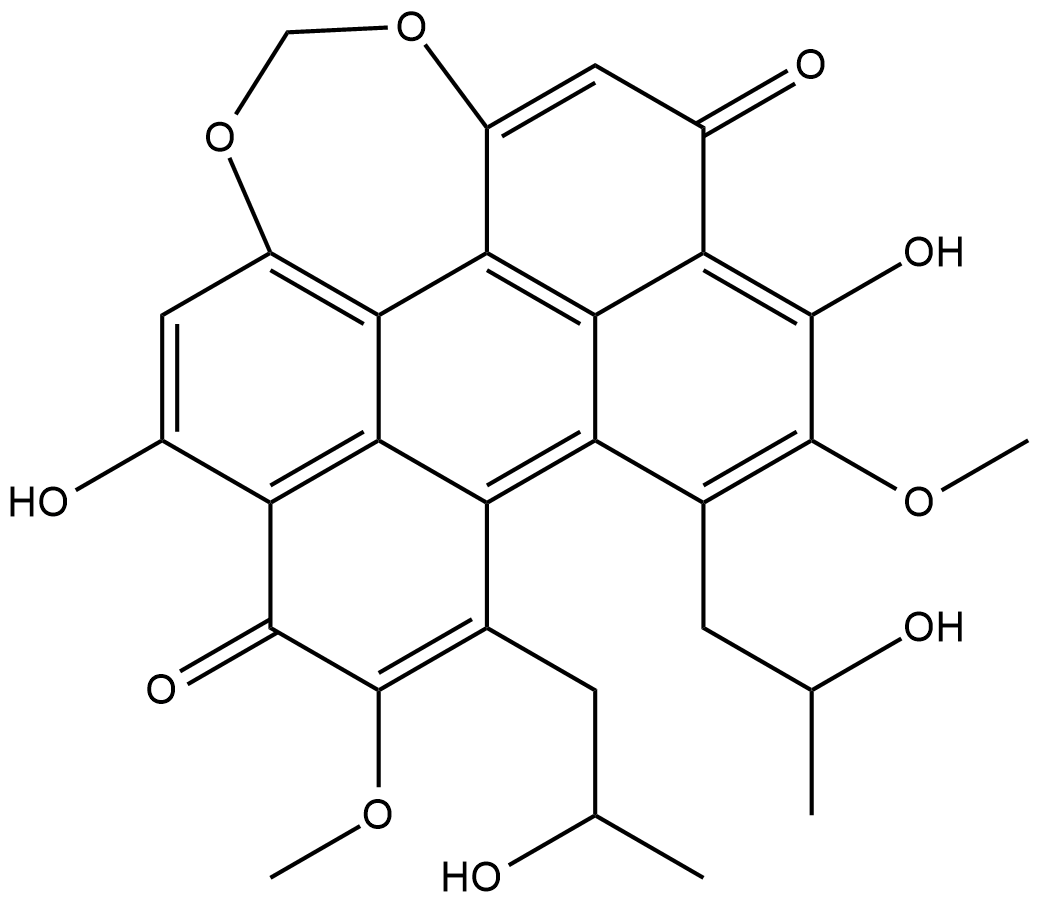Cercosporin (Synonyms: CGP 049090, NSC 153111) |
| Catalog No.GC18521 |
La cercosporine est produite par un phytopathogène, Cercosporakikuchii, et les elsinochromes, pigments de la famille des champignons elsinoe. La cercosporine est un photosensibilisateur puissant avec une courte longueur d'onde d'activation, principalement adaptée aux traitements de thérapie photodynamique superficielle (PDT), en particulier lorsqu'il est nécessaire d'éviter les perforations.
Products are for research use only. Not for human use. We do not sell to patients.

Cas No.: 35082-49-6
Sample solution is provided at 25 µL, 10mM.
Cercosporin is produced by a plant pathogen, Cercosporakikuchii, and the elsinochromes, pigments of the elsinoe family of fungi. Cercosporin is a potent photosensitizer with a short activation wavelength, mostly suitable for superficial photodynamic therapy (PDT) treatments, especially when it is necessary to avoid perforations[1].Cercosporin contains the perylenequinone structural features necessary to PKC activity with an IC50 of 0.6-1.3 μM[2].
Cercosporin (0.8-8.0 μM; 30 s, 60 s, 90 s, 120 s) photodynamic therapy (PDT) effect is stronger in T98G cells than in U87 or MCF7 cells, the LD50 value for the T98G cells (0.14 J cm2) is much less than the LD50 value for MCF-7 and U87 cell lines (0.26 and 0.24 J cm2, respectively)[1].Cercosporin (0-3 μΜ; 24 hours) interplays with copper results in a synergistic cytotoxicity in MCF7 and T98G cells, that is, S(CuSO4 + Cerco) ≪ S(CuSO4) x S(Cerco), barely has an additive effect in U87 cells[1].
References:
[1]. Mastrangelopoulou M, et al. Cytotoxic and Photocytotoxic Effects of Cercosporin on Human Tumor Cell Lines. Photochem Photobiol. 2019 Jan;95(1):387-396.
[2]. Morgan BJ, et al. Design, synthesis, and investigation of protein kinase C inhibitors: total syntheses of (+)-calphostin D, (+)-phleichrome, cercosporin, and new photoactive perylenequinones. J Am Chem Soc. 2009 Jul 8;131(26):9413-25.
Average Rating: 5 (Based on Reviews and 24 reference(s) in Google Scholar.)
GLPBIO products are for RESEARCH USE ONLY. Please make sure your review or question is research based.
Required fields are marked with *




















